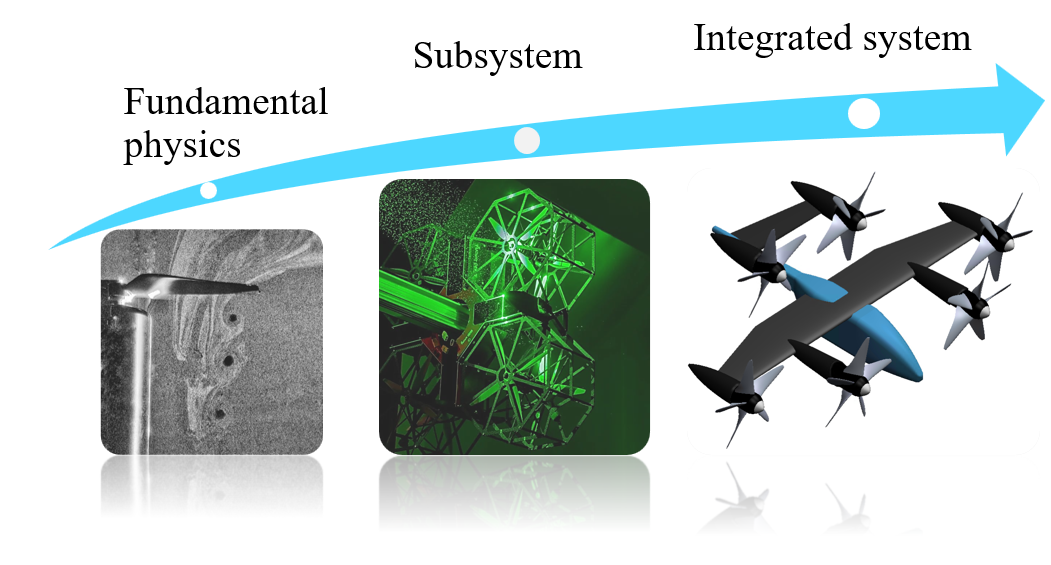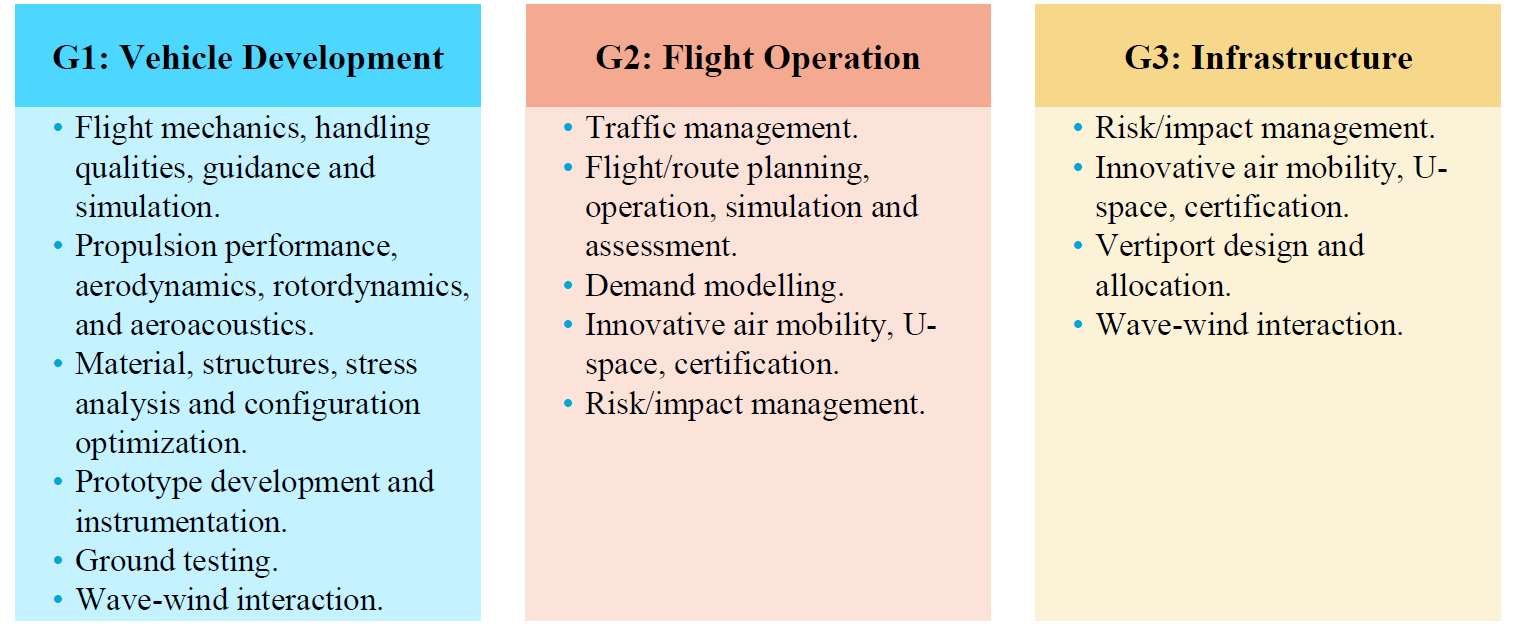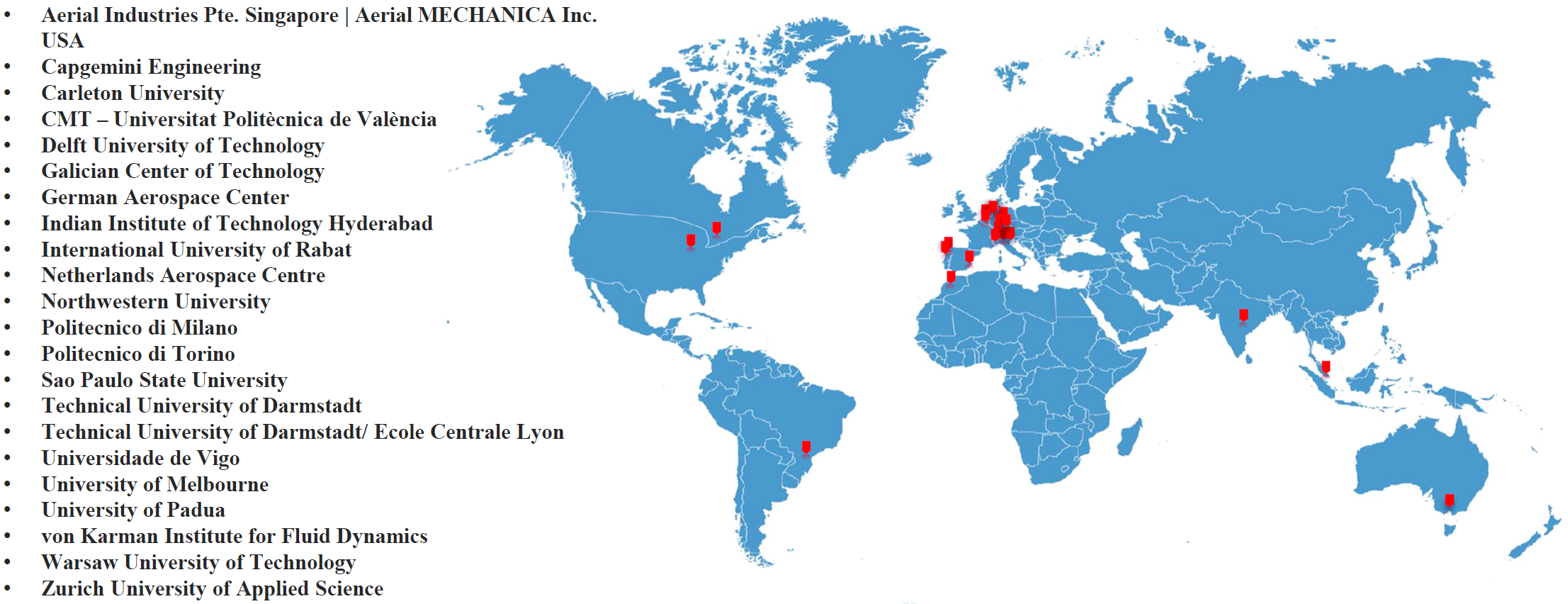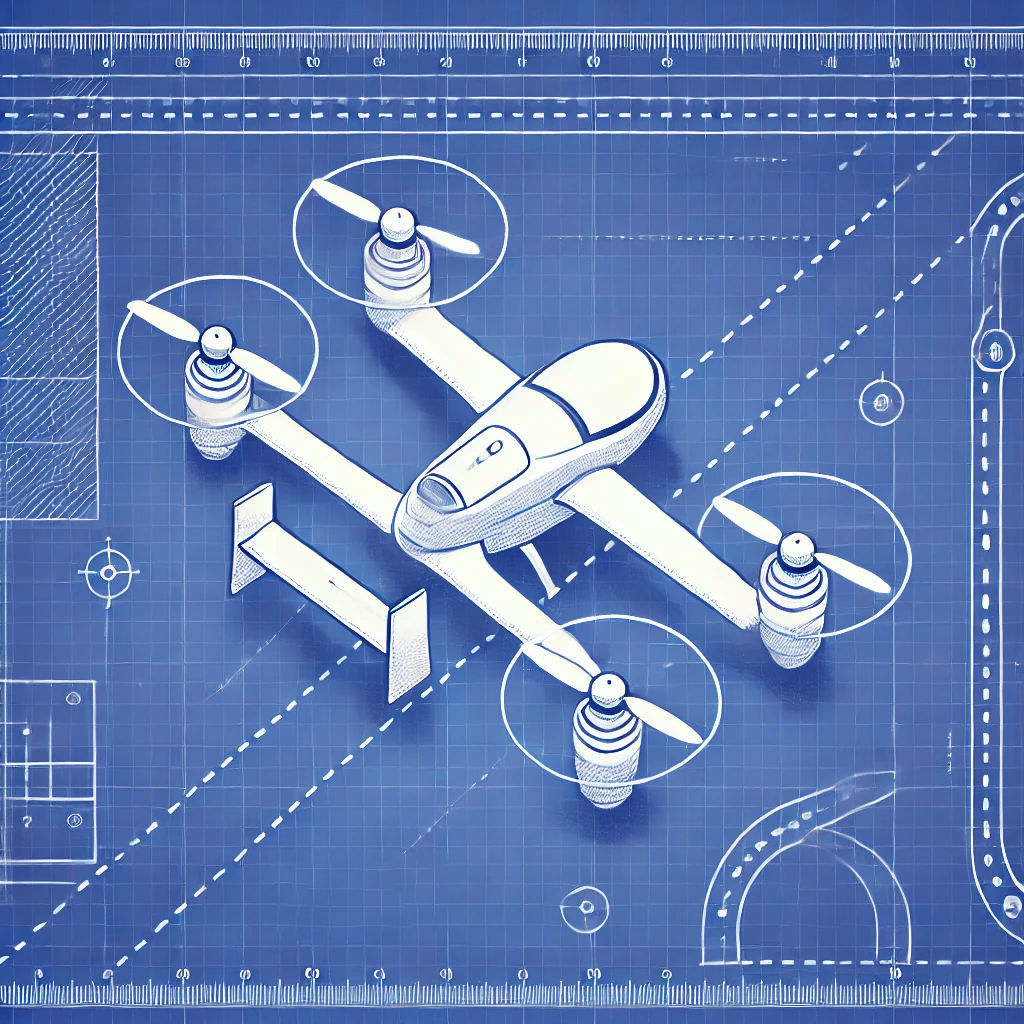UAM Open Source Model
Summary of G1-G2-G3 Meetings

Aim of the Project
The UAM Open Source Model project is an international collaboration which:
deploys an open-source modular model as a common test platform constituted by:
a vehicle design,
an operation envelope and strategy,
an integrated open-source environment
with a dedicated chosen infrastructure.
The aim is to have a representative and scalable
test-platform to solve scientific questions in physics, operations and integration, which can be used and accessed by anyone, anywhere, anytime.
Project organization
The project is structured in 3 groups and the collaboration operates voluntarily.
The groups are divided into:
G1: Vehicle design
G2: Flight Operation
G3: Infrastructure

Project leaders
The project and group leads
responsible for advancing the activities in the project:
PL: Sen Wang
G1: Combey Kangni
G2: Yazan Safadi
G3: Ottavio Pedretti
List of collaborators
to be updated...

Sailing bulletin ... 13-2-2025
Group 1 - Vehicle Design Updates
Milestone 1: Chosen missions and representative configurations (January - February 2025)
Objective and tasks: Freeze three potential target configurations and missions and evaluate common components.
Completed actions:
chosen reference configuration: multi-copter, split take-off+cruise, tilt-rotor configuration;
chosen missions including range, cruise speed, altitude, powertrain, fuselage and number of rotors;
identified common parts to be designed: fuselage, wing attachment, and rotor unit.


Group 2 - Flight Operation Updates
Milestone 1: Chosen missions and representative configurations (January - February 2025)
Objective and tasks: the flight operation group is dedicated to planning and simulating UAM operations, addressing demand modeling, route planning, and airspace integration.
Completed actions:
started preparing a simulation environment with scenario generators according to vehicle inputs;
starting designing mission profile and flight operation strategies with vehicle inputs;
identified assessment parameters for integration of operations into vehicle and infrastructure integration.
Group 3 - Infrastructure Updates
Milestone 1: Context Analysis (January - February 2025)
Objective and tasks:
Conduct an in-depth study of São Paulo’s helicopter market and urban context to identify key factors for vertiport design, take São Paulo as target reference.
Gather and analyze data on helicopter operations, urban density, and potential vertiport locations.
Identify trends, challenges, and opportunities relevant to vertiports.
Summarize findings into actionable design criteria.
Completed actions:
check capacity of vertiports;
look to helicopters/heliports in san paolo to check location
relation between population and number of flights and dimension of vertiport
depending on number of population to move scaling of vertiports;
interaction and interference with elements around the vertiport and interrelation between the elements of vertiport itself
material for sustainability of vertiport.

DICUAM 2026
 Registration website for DICUAM 2026
Registration website for DICUAM 2026DICUAM 2026d.ragni@tudelft.nl
DICUAM 2026d.ragni@tudelft.nlhttps://www.dicuam2026.org
2026-03-25
2026-03-27
OfflineEventAttendanceMode
EventScheduled
DICUAM 2026DICUAM 20260.00EUROnlineOnly2019-01-01T00:00:00Z
To be announcedTo be announced